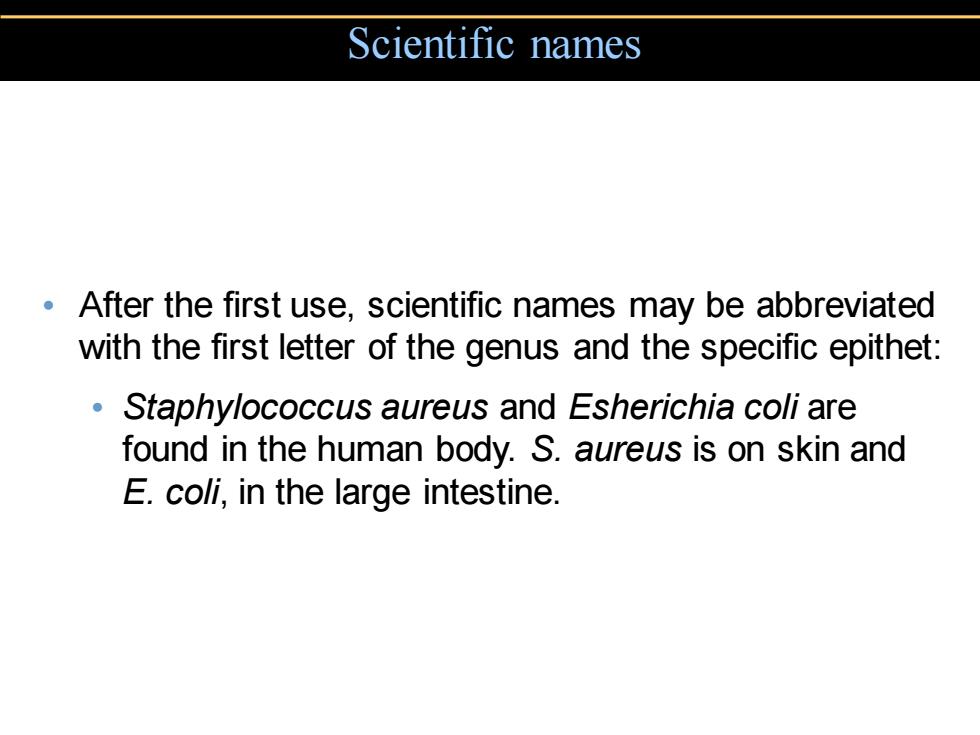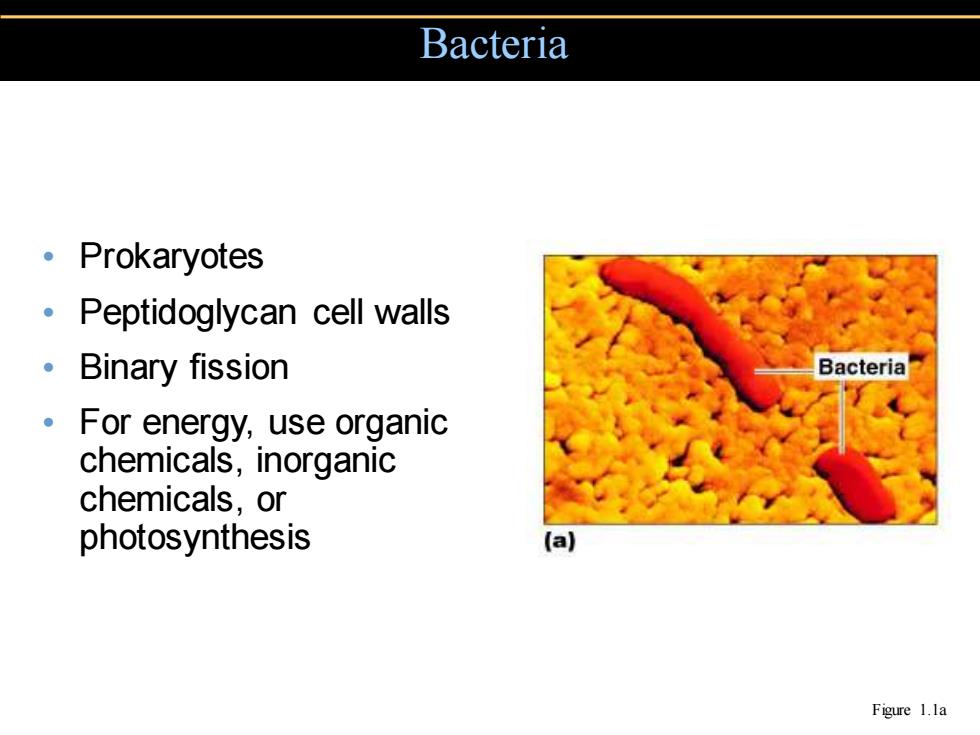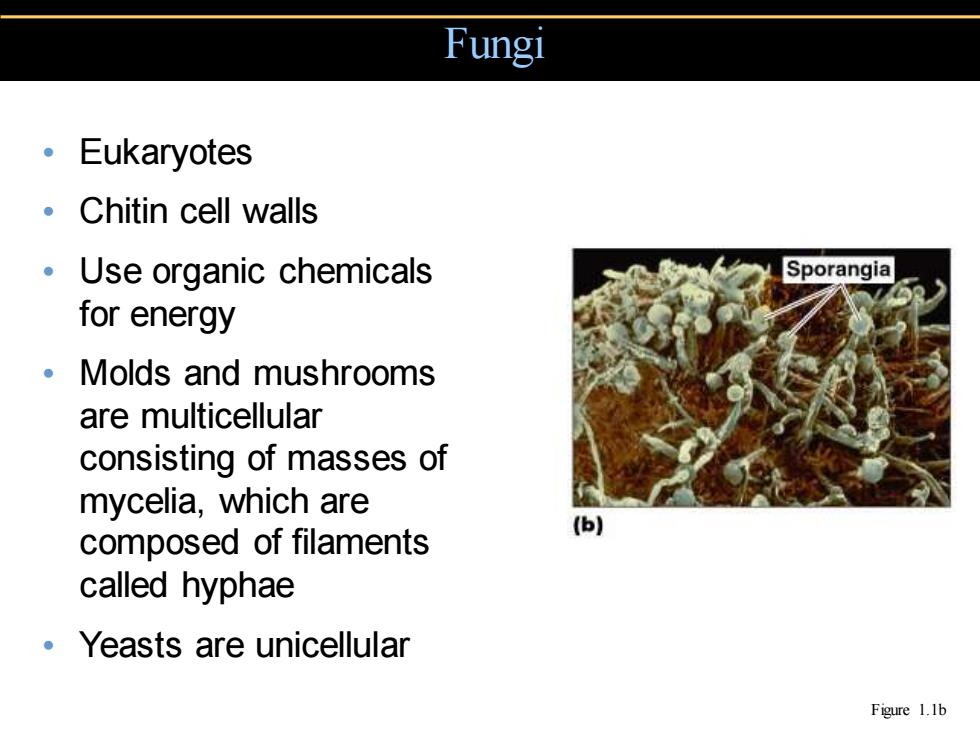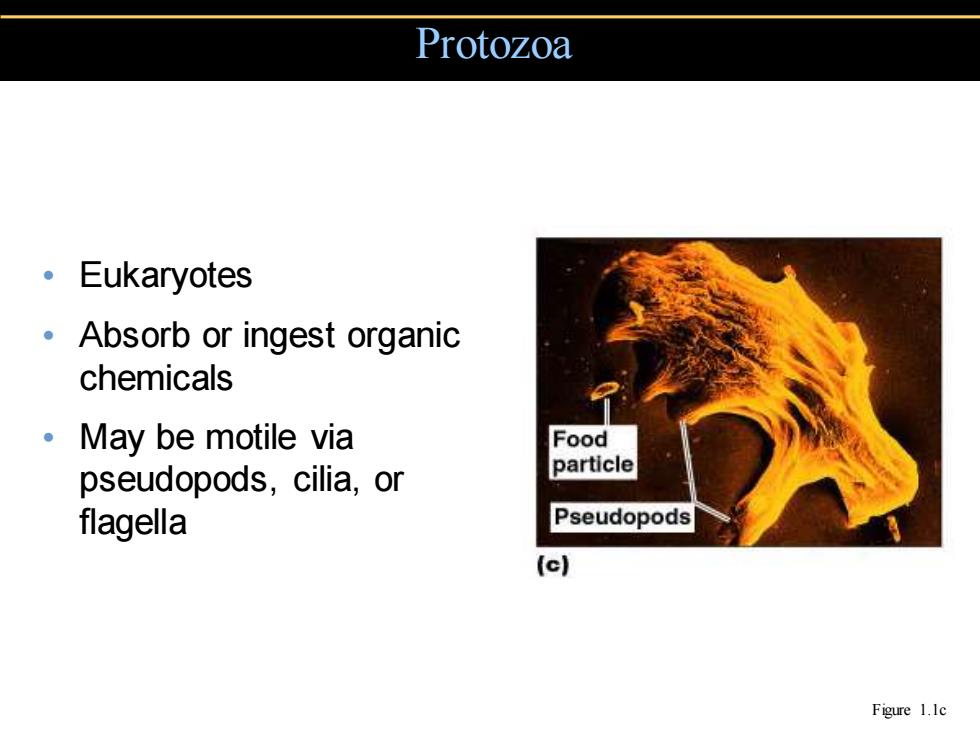
Scientific names After the first use,scientific names may be abbreviated with the first letter of the genus and the specific epithet: Staphylococcus aureus and Esherichia coli are found in the human body.S.aureus is on skin and E.coli,in the large intestine
• After the first use, scientific names may be abbreviated with the first letter of the genus and the specific epithet: • Staphylococcus aureus and Esherichia coli are found in the human body. S. aureus is on skin and E. coli, in the large intestine. Scientific names

Bacteria 。Prokaryotes Peptidoglycan cell walls 。Binary fission Bacteria For energy,use organic chemicals,inorganic chemicals,or photosynthesis a Figure 1.la
• Prokaryotes • Peptidoglycan cell walls • Binary fission • For energy, use organic chemicals, inorganic chemicals, or photosynthesis Bacteria Figure 1.1a

Archaea: 。Prokaryotic ·Lack peptidoglycan 。Live in extreme environments ·Include: 。Methanogens ·Extreme halophiles Extreme thermophiles Figure 4.5b
• Prokaryotic • Lack peptidoglycan • Live in extreme environments • Include: • Methanogens • Extreme halophiles • Extreme thermophiles Archaea: Figure 4.5b

Fungi 。 Eukaryotes 。Chitin cell walls Use organic chemicals Sporangia for energy ·Molds and mushrooms are multicellular consisting of masses of mycelia,which are composed of filaments called hyphae Yeasts are unicellular Figure 1.1b
• Eukaryotes • Chitin cell walls • Use organic chemicals for energy • Molds and mushrooms are multicellular consisting of masses of mycelia, which are composed of filaments called hyphae • Yeasts are unicellular Fungi Figure 1.1b

Protozoa 。Eukaryotes Absorb or ingest organic chemicals 。May be motile via Food pseudopods,cilia,or particle flagella Pseudopods (e) Figure 1.1c
• Eukaryotes • Absorb or ingest organic chemicals • May be motile via pseudopods, cilia, or flagella Protozoa Figure 1.1c